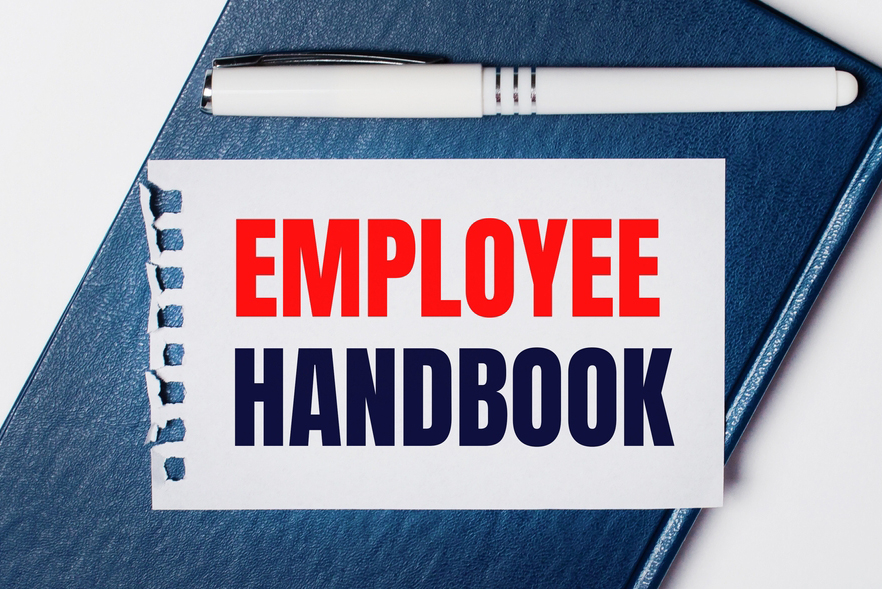No federal or state law requires an employer to publish an employee handbook. However, many HR and legal professionals consider handbooks a best practice. A well-crafted handbook can provide legal protection in a lawsuit should an employee claim they were unaware of the employer’s policies.
Handbooks provide vital information on standards of conduct for employees, prevent misunderstandings, and help assist in onboarding employees.
What Happens When an Employer Has Employees in Multiple States?
While employers are not required to provide an employee handbook, if they choose to do so, some states require certain policies to be included.
For example, while New York and California do not require an employee handbook per se, all employers must provide a sexual harassment policy. New York also requires employers to provide a sexual harassment complaint form.
In addition, many states and localities have different laws concerning protected characteristics, wage payments, weapons, lactation breaks, and various types of leave, including family, medical, jury duty, domestic violence, and witness leave. Further, employers must consider whether to include alternate provisions based on industry, number of employees, government contracts, union status, government employment, and remote work.
Approaches to Employee Handbooks May Vary
There are multiple approaches to the multistate employee handbook. First is the “generic” handbook. Some employers provide a generic handbook that only covers policies that address federal law. Such a handbook could prove problematic for employers because policies mandated by certain states are not included.
To remedy that problem, some employers choose to base each policy of the general handbook on the state’s laws with the legal provisions that are most generous to the employees. This approach, however, presents a disadvantage to the employer. For example, an employer might experience less productivity by providing all employees with the most generous leave.
On the other end of the spectrum, some employers provide a separate handbook for every state in which they have employees. This is cumbersome, but there is another hybrid means to accomplish an employer’s goals: A best practice is to maintain a general handbook that covers general policies and to add state-specific supplements for employees in their respective states and localities.
BLR’s Employee Handbook Builder, created in partnership with Jackson Lewis LLP, is an efficient and easy-to-use means to publish such a handbook.
Remote Employees Create Complications
Having remote employees increases the odds that employers may need to add policies for more states than expected. Unless the employer’s policy does not permit employees to work when they are out of state or in another city, they may face problems if a policy becomes relevant when a remote employee works while traveling without notifying the employer.
For example, an employer in Wyoming may not have to reimburse an employee for using their cell phone for work. Still, an employer in California would have to reimburse the employee for the proportion of use used for work.
Union and Non-Union Versions
Most employers prefer to have separate employee handbooks for their nonunion and union employees because the union collective bargaining agreement (CBA) generally puts more significant restrictions on the employer and covers multiple topics, including wages and overtime, working conditions, paid time off, and job protections.
Nonunion employees also typically are considered at will, while union employees are not because of the terms of the CBA, so nonunion employee handbook policies also include at-will language throughout the policies that are not compatible with union policies requiring specific procedures and actions before an employee is disciplined or terminated.
Union CBAs typically cover wages (including overtime, bonuses, and increases), work rules, working conditions, scheduling, paid time off benefits, layoffs and rehires, and processes for discipline and termination. The terms of the CBA are set through negotiation between the union and the employer and generally may only be changed by bargaining with the union.
CBAs generally leave little discretion regarding how policies covering these negotiated topics are implemented. As a result, any policies addressing these topics may differ substantially from those an employer puts in place for nonunion employees.
In contrast, employee handbook policies for nonunion employees are specifically written to be nonbinding and to provide general information. Employers reserve their right to implement the policies as they determine is appropriate and to change them at their discretion.
Employers also include at-will statements in employee handbooks to explain to nonunion employees that the handbooks are not intended as contracts, that they may quit at any time and for any reason, and that the employer may terminate them at any time and for any lawful reason. These at-will statements typically are included to underscore that the policies do not create contracts.
Takeaway for Employers
Many considerations go into preparing. Employers should consider having their handbooks reviewed by outside counsel in every jurisdiction in which they operate to ensure that their handbooks reflect all applicable laws for the state and locality.

Business and Learning Resources (BLR), a division of Simplify Compliance, LLC, is an industry-leading knowledge provider with more than 40 years of experience in human capital management, environmental, health, and safety; learning and development; and legal markets. BLR® provides innovative education solutions designed to help businesses deliver consistent training, achieve compliance, and maximize efficiencies in employee workflows, resulting in measurable performance and financial improvements.
The post Considerations When Crafting Multi-State Employee Handbooks appeared first on HR Daily Advisor.
